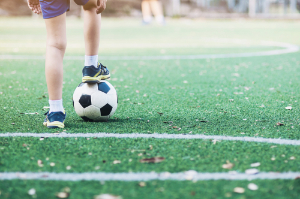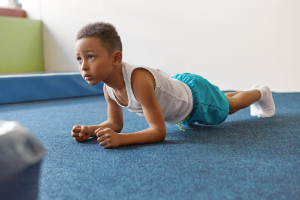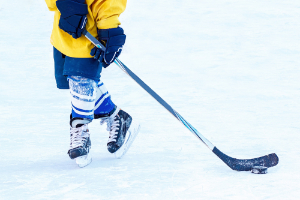Unlock the Power of Your Workforce
Maximize Your Team's Potential with our Human Performance Solutions
Protect Your Child-Athlete from Overuse Injuries with These Four Tips
When considering how to protect children from sports-related injuries, our minds likely default to injuries that are acute in nature. We envision the concussion-threatening collision of two football players or imagine the ominous sound of a “pop” from a soccer player’s knee. Preventing these traumatic, or acute, injuries is certainly a priority. Stop Sports Injuries has provided detailed, sport-specific guides to aid in reducing the risk of traumatic injuries in youth sports. Parents are encouraged to remember that when focusing solely on this type of prevention, we overlook the shocking prevalence of injuries related to overuse. Often referred to as a repetitive strain injury or chronic injury, this affliction accounts for an estimated 50% of all youth sports injuries (1).

Since overuse injuries result from cumulative strain on the affected area, they often creep in undetected. They can begin with a feeling of minor discomfort; this often allows the injury to linger untreated. The longer any overuse injury is left untreated the more likely it is to contribute to further physiological complications such as an altered gait or muscle imbalances. The good news is that you don’t need a PhD in kinesiology to start protecting your kids from common overuse injuries today.
Fueling a Growing Athlete
The dietary needs of active children regularly participating in physical conditioning activities are different than that of their less active peers. Reference the helpful guide provided MyPlate to confirm that you’re serving up the proper nutrients and portion sizes from each food group. Brush up on your nutrition-savvy to help support smart adjustments to the changing demands of your child’s nutrition needs.

Providing high quality food with minimal artificial ingredients is a great way to fuel your child for success. Ingredients that come from the earth or naturally occur in nature are preferred. Avoid the temptation to overfeed your child. Many children are intuitive eaters with the ability to self-regulate their eating. Generally, there is no need to force seconds on a child that tells you they are full.
Smart and Steady Training
The majority of overuse injuries come from errors in training and conditioning programs. In the case of activities that require highly repetitive, technical motions it is critical that children are being taught proper form. Examples of these types of activities are golf or pitching. Spending a little time teaching your child the basics of throwing a baseball in your backyard is likely not going to result in a repetitive strain injury. However, for a child who is training to be a baseball pitcher and practices over an hour a day, technique and recovery are critical. Proper coaching from competent coaches and the support of athletic trainers becomes an essential for these scenarios.

Gearing Up for Success
Outfitting a growing child each season in sporting equipment can be an expensive endeavor. While it’s not necessary to seek top-of-the-line sports equipment, it is important to avoid poor fitting or overly worn gear. Avoid buying used or recycling hand-me-down items like shoes or skates which will be broken in based on the previous user’s stride. Make sure kids are properly sized for helmets and other protective gear to ensure a secure fit. Equipment such as hockey sticks or golf clubs need to be the appropriate length to avoid unnecessary postural contortions.

Keep an Open Mind and Open Dialogue
Though it may be tempting to fixate on nurturing a child’s athletic ability in a particular sport, keep an open mind to cross-training. Mixing up the routine with a completely different activity on the weekend benefits child athletes both physically and mentally. Young children also tend to suffer less chronic injuries when they participate in multiple sports throughout the year, rather than a year-long single sport (2).

SiteWell Solutions believes that safe sports are fun sports. We hope this article has provided you with new insights to help keep your child athlete injury free. Please visit our blog for more health, wellness and injury prevention resources.
Sources
- Paterno MV, Taylor-Haas JA, Myer GD, Hewett TE. Prevention of overuse sports injuries in the young athlete. Orthop Clin North Am. 2013;44(4):553-564. doi:10.1016/j.ocl.2013.06.009
- Jayanthi N, Pinkham C, Dugas L, Patrick B, Labella C. Sports specialization in young athletes: evidence-based recommendations. Sports Health. 2013;5(3):251-257. doi:10.1177/1941738112464626
About SiteWell Solutions
SiteWell Solutions is committed to supporting business and organizations with health, wellness and injury prevention services. A healthy workforce is proven to be more engaged, productive and happier. It is our mission to deliver these outcomes to every organization we serve. Our services include onsite and virtual corporate wellness programs, industrial athlete training, injury prevention services, chronic disease management, employee resilience support services and much more. Contact info@sitewellsolutions.com today to find out how we can optimize your organization.
Health tips in your inbox
Our Services
Get in touch
Call us at +1 (321) 300-4338
Terms & Conditions | SWS App Privacy Policy
© SiteWell Solutions | 2025 All rights reserved
Site design by WebXDesigner.com